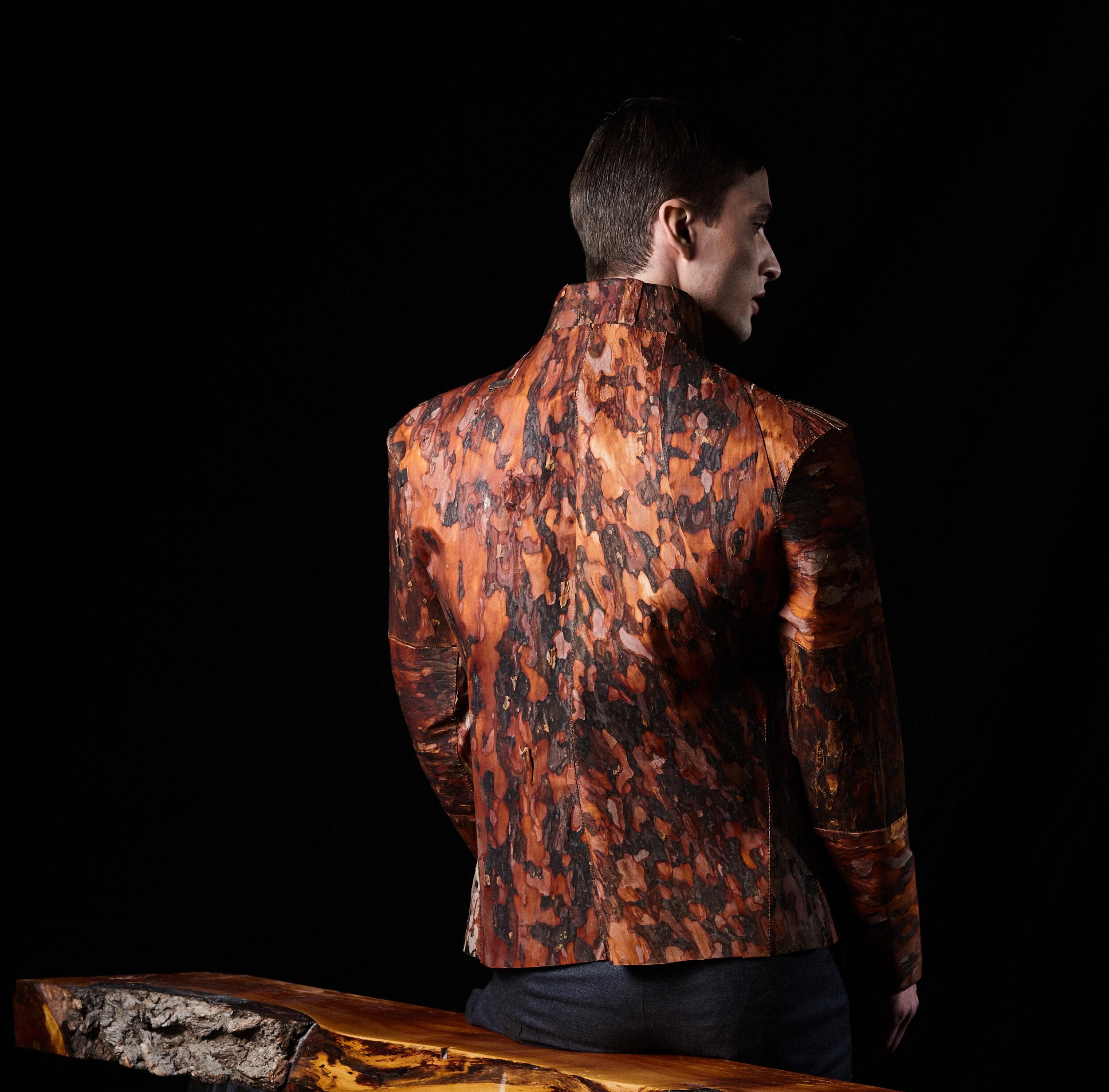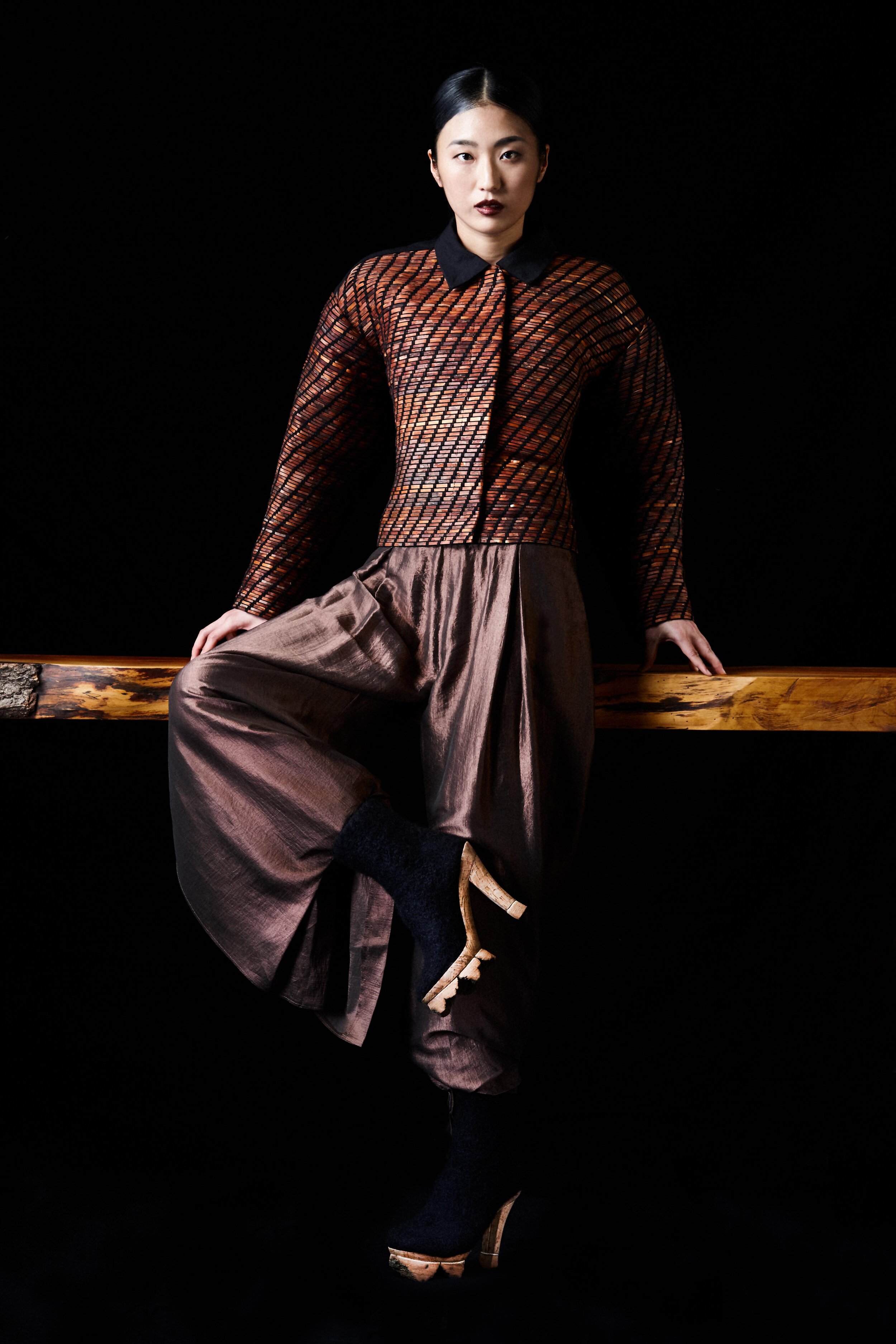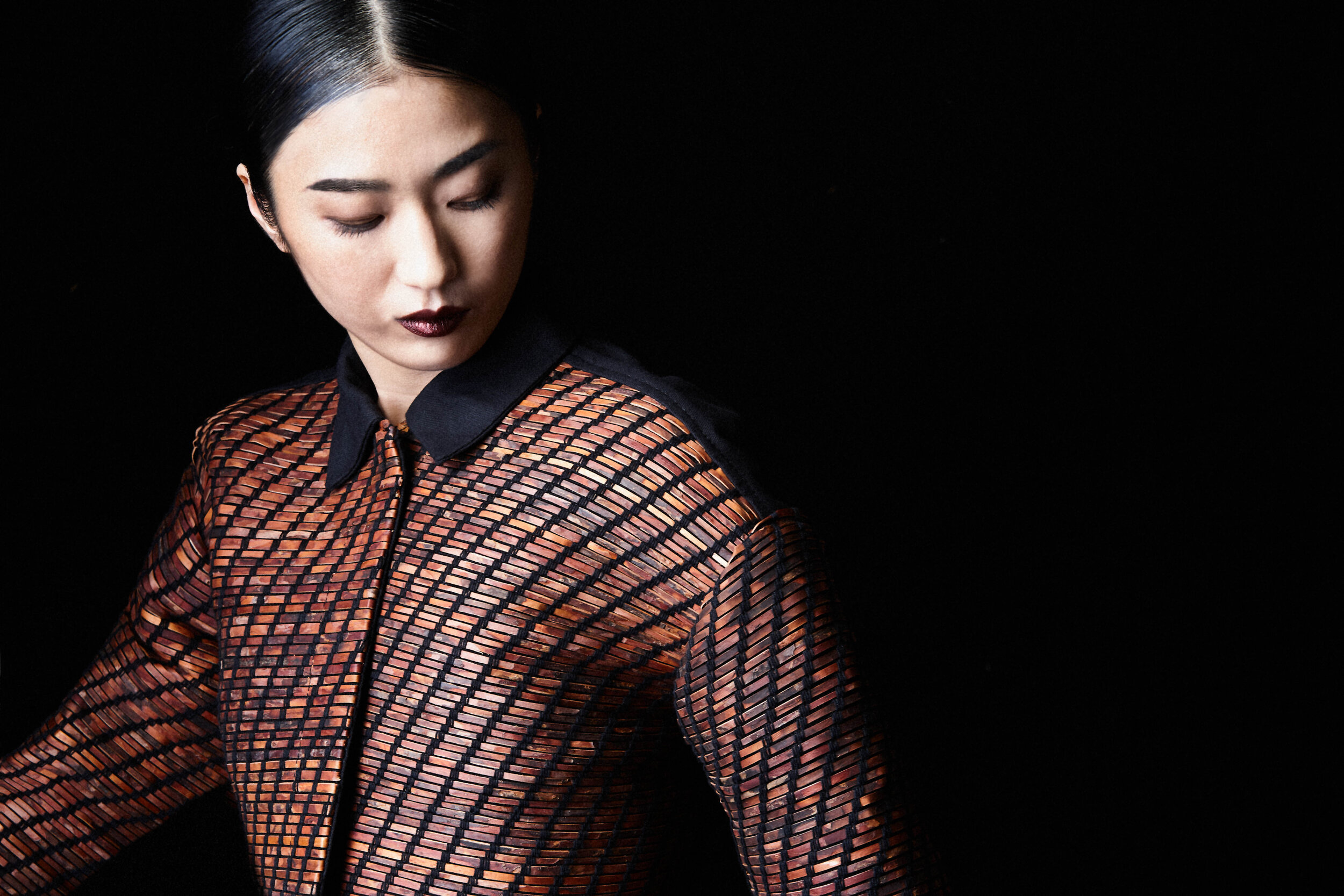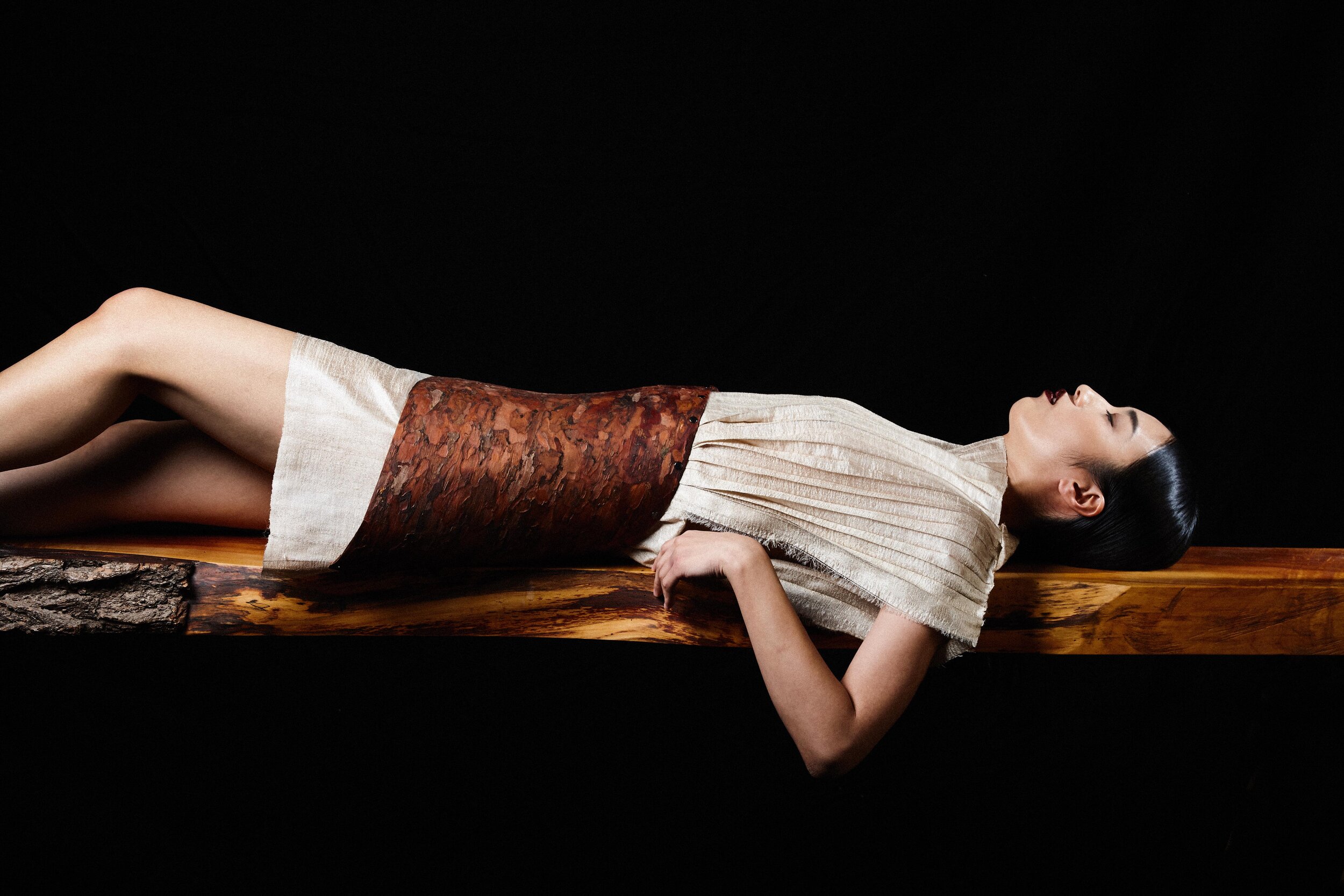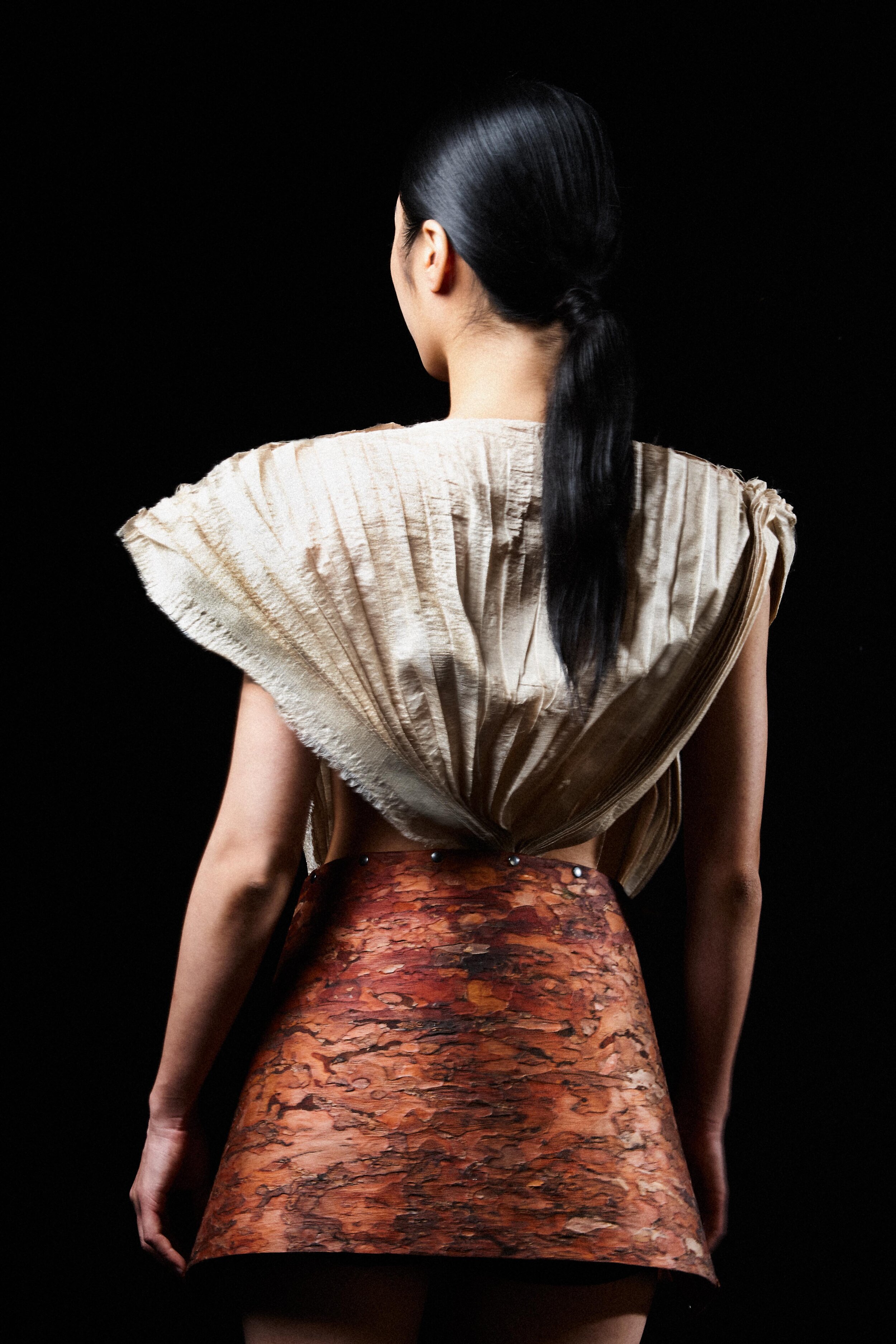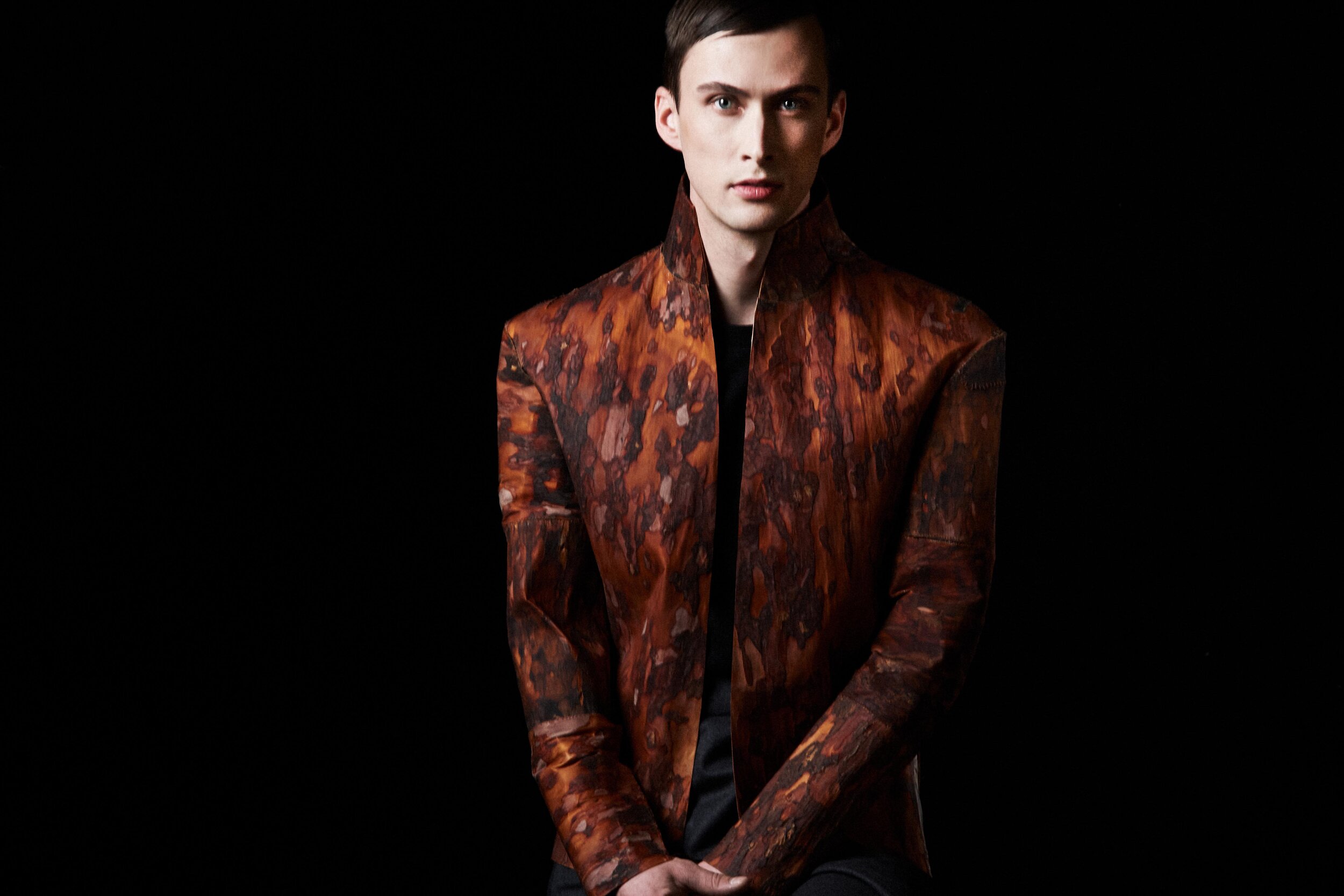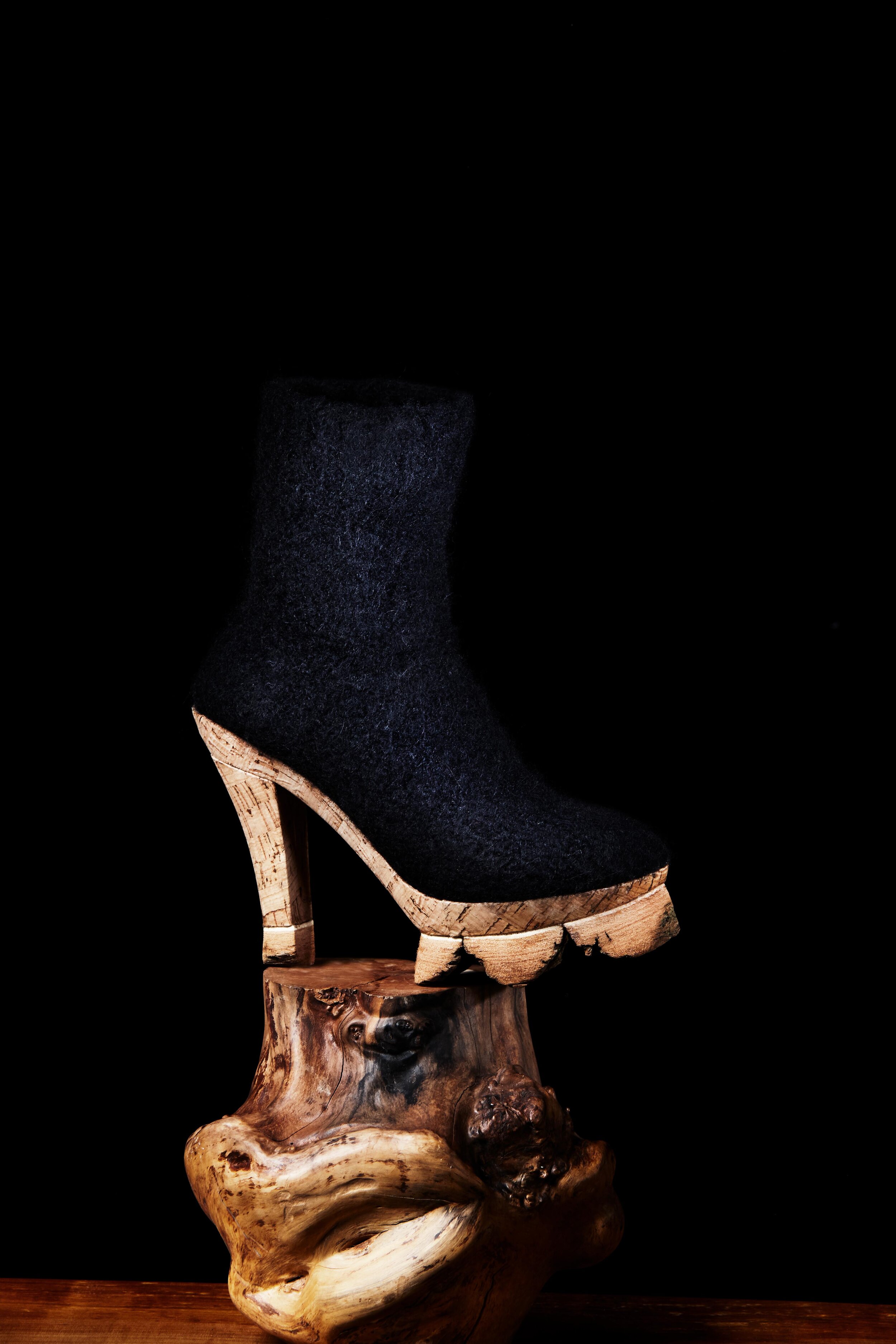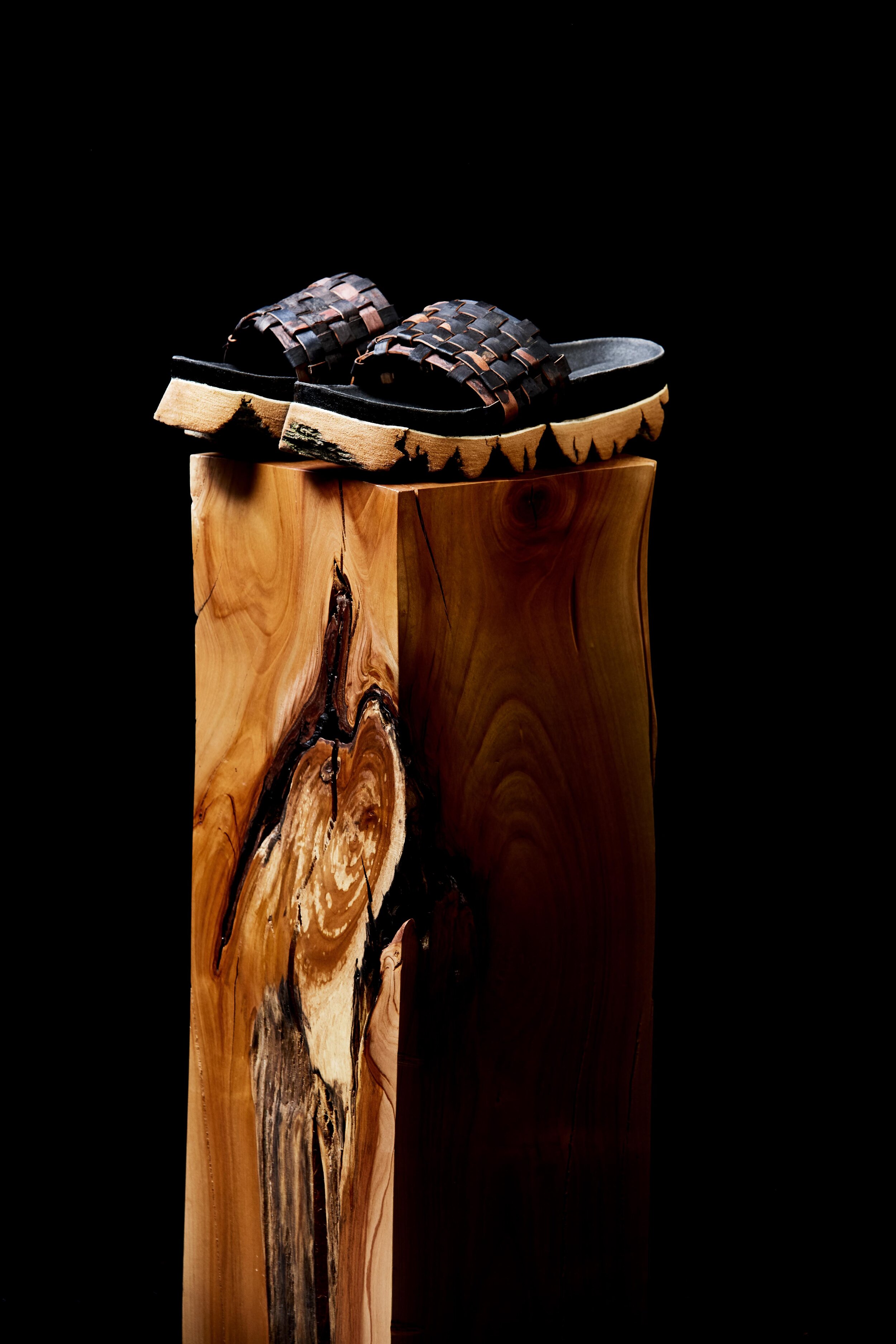Woven Bark Jacket
The woven bark jacket is the first test of how to apply bark manufacturing techniques into design applications. It also researches how to overcome mechanical weaknesses of bark via crafts. It is a result of the ongoing doctoral thesis in the “plant material adaptation group” at the Max Planck Institute of Colloids and Interfaces.
First to solve problems of sewing and cutting and second to get more flexibility the procedure of weaving was used for the next jacket. This one is made out of woven pine bark. The bark textile was made on a manual weaving chair. It is made with a twill weaving rhythm. Twill weaving is made with a pattern of diagonal parallel lines. Together with plain weave and satin, it is one of the three fundamental types of textile weaving. The characteristic diagonal pattern is made by passing the weft thread over one or more warp threads then under two or more warp threads. Twill is popular in denim or furniture fabrics because it is very durable, more pliable and has a better wrinkle recovery.
The woven was made in collaboration with fashion designer Johanna Hehemeyer-Cürten. The woven bark shows more flexibility and wearing comfort than the first jacket. It keeps the leatherish feeling of getting rid of the stiffness. It can be assumed that when the bark strips are finer and narrower, the textile becomes more flexible.
The bark jacket is a tailor-made sample out of flexible pine bark. In cooperation with fashion designer, Johanna Hehemeyer-Cürten a suit jacket was designed. The bark jacket is an experiment to understand design and scientific questions.
It also shows first material characteristics’ which need to be considered for manufacturing. The is possible to sew bark, in the same way, to work with leather but seams in longitudinal fiber direction will separate the material. The haptic and flexibility of bark and leather are quite similar. Depending on the inner structure bark is much stiffer than leather. Something which needed to be considered during the design process and forced to overthink the construction of the jacket. The comfort of wear is, unfortunately, worse than leather. Missing flexibility makes the first jacket to a stiff object. To overcome this problem either a new fabrication method for the flexible bark should be used and application fields with static objects should be deliberated.
Photos made by STUDIO PATRICK WALTER

